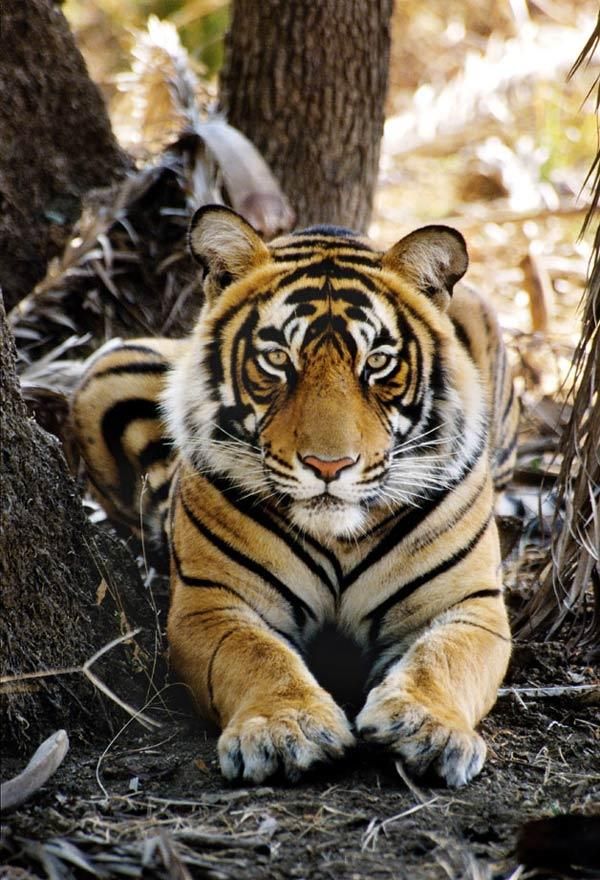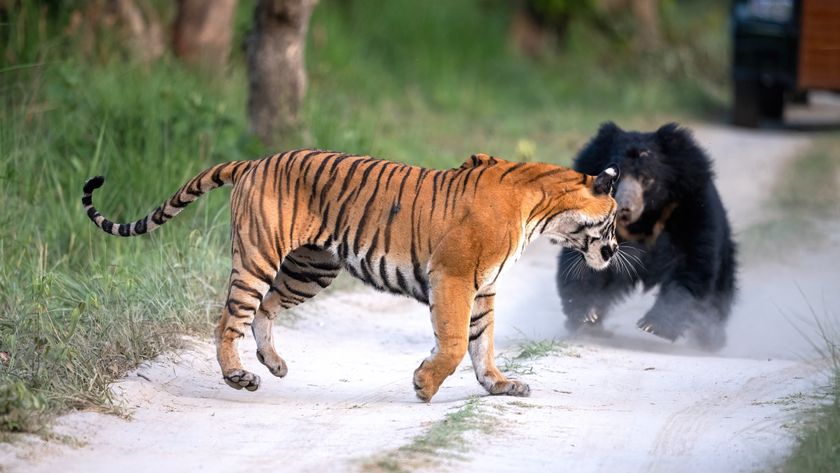
Tiger Numbers Could Triple With Proper Protection, Study Finds

The world's tiger population could triple from a mere 3,200 animals to more than 10,000 if the iconic cats have access to protected corridors and can roam freely between reserves, parks and other large regions they call home, new research asserts.
Akin to a tiger interstate system that connects larger tiger habitats, these corridors are key if the species is to repopulate the 13 countries in Asia where the globe's remaining six subspecies of wild tigers survive , according to a new study from international conservation scientists and conservation groups.
"We absolutely need to stop the bleeding, the poaching of tigers and their prey in core breeding areas, but we need to go much further and secure larger tiger landscapes before it is too late," said Eric Dinerstein, chief scientist at conservation group WWF and a co-author of the study.
"In the midst of a crisis, it's tempting to circle the wagons and only protect a limited number of core protected areas, but we can and should do better," Dinerstein said in a statement.
In November 2010, governments from all 13 tiger range states convened for the world's first tiger summit in St. Petersburg, Russia. At the meeting, officials from all 13 nations committed to protections for tigers, with the goal of doubling the population by 2022.
The new study, published in the current issue of the journal Conservation Letters, is the first assessment of that commitment, and suggests that it is a feasible one, and can even be exceeded if corridors between tiger habitats are properly protected.
The authors point to historical examples of rebounding tiger populations in lowland Nepal, the Russian Far East and most recently at a national park in India all places where tigers had all but disappeared, but eventually returned via protected links between habitats.
Sign up for the Live Science daily newsletter now
Get the world’s most fascinating discoveries delivered straight to your inbox.
In contrast, the authors point to two of India's premier tiger reserves to show how lack of connectivity can preclude tiger population recovery. Tigers disappeared from Sariska and Panna tiger reserves in 2005 and 2009 due to poaching and were not able to re-colonize the parks because the reserves were completely isolated.
Consequently, wild tigers had to be translocated into these reserves in an attempt to re-establish populations.
Wild tiger numbers have declined from about 100,000 in the early 1900s to as few as 3,200 today due to poaching of tigers and their prey, habitat destruction and human/tiger conflict. Most of the world's remaining tigers are scattered in small, isolated pockets across Asia.
"Tiger conservation is the face of biodiversity conservation and competent sustainable land-use management at the landscape level," said study co-author John Seidensticker of the Smithsonian Conservation Biology Institute. "By saving the tiger we save all the plants and animals that live under the tiger's umbrella."












